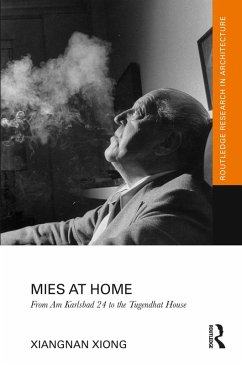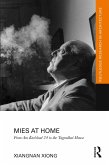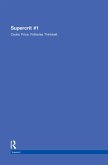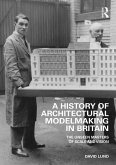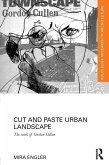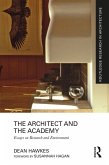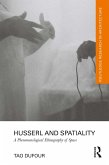Beautifully illustrated throughout, Mies at Home offers a fresh investigation of the diverse intentions and strategies the architect used in creating his iconic open spaces. It will be an insightful read for researchers, academics and students in architectural history and theory.
Dieser Download kann aus rechtlichen Gründen nur mit Rechnungsadresse in A, B, BG, CY, CZ, D, DK, EW, E, FIN, F, GR, HR, H, IRL, I, LT, L, LR, M, NL, PL, P, R, S, SLO, SK ausgeliefert werden.
"Xiangnan Xiong has produced a groundbreaking study of the pivotal moment in Ludwig Mies van der Rohe's career, when he began the exploration of new ideas of space and living that eventually reached their apotheosis in two of his masterworks: the Barcelona Pavilion and the Tugendhat House. Her radical assertion, that Mies's own patterns of living and working in his Berlin apartment were fundamental to his spatial breakthrough of the late 1920s, will doubtless reshuffle long-held assumptions and offer us a new and more interesting Mies. This is a splendid and important work of scholarship. "
- Christopher Long, Martin S. Kermacy Centennial Professor, School of Architecture, University of Texas at Austin, USA.
"In her original, imaginative study of the houses and the apartments Mies van der Rohe has conceived in Europe, Xiangnan Xiong operates a Copernican revolution: she identifies as the source for the emergence of his main ideas about domestic architecture his own home in the center of Berlin. Thanks to this new genealogy, unseen patterns appear in his designs, and the often repetitive Miesian scholarship is challenged."
- Jean-Louis Cohen, Sheldon H. Solow Professor in the History of Architecture, Institute of Fine Arts, New York University, USA.
- Christopher Long, Martin S. Kermacy Centennial Professor, School of Architecture, University of Texas at Austin, USA.
"In her original, imaginative study of the houses and the apartments Mies van der Rohe has conceived in Europe, Xiangnan Xiong operates a Copernican revolution: she identifies as the source for the emergence of his main ideas about domestic architecture his own home in the center of Berlin. Thanks to this new genealogy, unseen patterns appear in his designs, and the often repetitive Miesian scholarship is challenged."
- Jean-Louis Cohen, Sheldon H. Solow Professor in the History of Architecture, Institute of Fine Arts, New York University, USA.

